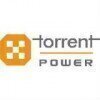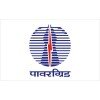Filter interviews by
Wind World Electrical Engineer Interview Questions and Answers
6 Interview questions
VCB, SF6, CT, PT, LA are all electrical equipment used in power systems.
VCB stands for Vacuum Circuit Breaker and is used for switching and protection of electrical power systems.
SF6 is a gas used as an insulating medium in high voltage electrical equipment such as circuit breakers, switchgear, and transformers.
CT stands for Current Transformer and is used to measure electrical current in power systems.
PT stands f...
Different types of tests related to transformers include routine tests, type tests, and special tests.
Routine tests are performed on every transformer and include measurement of winding resistance, insulation resistance, and voltage ratio.
Type tests are performed on a sample transformer to verify its design and include temperature rise test, impulse test, and short-circuit test.
Special tests are performed on trans...
Copper and aluminum are commonly used conductors in transmission.
Copper is an excellent conductor due to its high electrical conductivity.
Aluminum is also widely used as it is lightweight and cost-effective.
Other conductors like silver and gold are rarely used due to their high cost.
Copper-clad steel conductors are used in specific applications where strength is required.
Tubelights contain a low-pressure gas, typically argon, and a small amount of mercury vapor, which helps produce light.
Tubelights primarily use argon gas, which is inert and helps in the ionization process.
Mercury vapor is also present, which emits ultraviolet light when ionized.
The UV light then excites the phosphor coating inside the tube, producing visible light.
Different phosphor coatings can produce various l...
Power formula: P = V x I, Transformer capacity/amp formula: Capacity = V x I, where V is voltage and I is current.
Power formula: P = V x I (P = power, V = voltage, I = current)
Transformer capacity formula: Capacity = V x I (Capacity = transformer capacity, V = voltage, I = current)
Power generation equipment includes generators, turbines, and transformers for producing electricity.
Generators convert mechanical energy into electrical energy
Turbines use steam, water, or wind to rotate a shaft connected to a generator
Transformers increase or decrease voltage for efficient transmission and distribution
Examples: gas turbines, hydroelectric generators, step-up transformers
Wind World Electrical Engineer Interview Experiences
11 interviews found
- Q1. Total Wind turbine
- Q2. Power generation
(2 Questions)
- Q1. Introduction of basic electricals
- Q2. How wind turbine opearates
- Ans.
Wind turbines operate by converting the kinetic energy of wind into mechanical power, which is then converted into electricity.
Wind turns the blades of the turbine, causing them to spin
The spinning blades turn a shaft connected to a generator
The generator converts the mechanical energy into electrical energy
The electricity is then sent to the power grid for distribution
Wind speed and direction are monitored to optimize...
Interview Preparation Tips
(2 Questions)
- Q1. What is transformers is function
- Ans.
Transformers are electrical devices that transfer electrical energy between two or more circuits through electromagnetic induction.
Transformers are used to step up or step down voltage levels in electrical power transmission and distribution systems.
They consist of two or more coils of wire, known as windings, that are wound around a core made of magnetic material.
The primary winding is connected to the input voltage s...
- Q2. Transformer function is voltage steps up and step down
Skills evaluated in this interview
I applied via Company Website and was interviewed in Feb 2023. There were 3 interview rounds.

(2 Questions)
- Q1. Personal information,
- Q2. Current Job, Current CTC
(5 Questions)
- Q1. Current company working profile
- Q2. Electrical questions ,
- Q3. Power generation , Motors
- Q4. Wind turbine, sub station equipment
- Q5. Circuit breakers, CT, PT
Interview Preparation Tips
I applied via Walk-in and was interviewed in Feb 2022. There were 3 interview rounds.
Interview Questionnaire
4 Questions
- Q1. Salary discussion, previous company salary Why you leave current organization
- Q2. Transformer protection system, motor, generator, alternator, basic electronic
- Q3. WTG Lightening path, Earthing system
- Q4. Basic electrical, plc, scada
Interview Preparation Tips
I applied via Walk-in and was interviewed before Sep 2022. There were 3 interview rounds.

(4 Questions)
- Q1. Basic electrical engineering about the power production and components details
- Ans. Transformers, generator,motors, control device, thyristor, igbt, inverter, converter, switching device,pcb , transmission line , sub station equipment, the question is under these major ly.
- Q2. Components principal and working procedure
- Q3. Power generation equipment characteristics and uses
- Ans.
Power generation equipment includes generators, turbines, and transformers for producing electricity.
Generators convert mechanical energy into electrical energy
Turbines use steam, water, or wind to rotate a shaft connected to a generator
Transformers increase or decrease voltage for efficient transmission and distribution
Examples: gas turbines, hydroelectric generators, step-up transformers
- Q4. Formula for power and transformer capacity/amp
- Ans.
Power formula: P = V x I, Transformer capacity/amp formula: Capacity = V x I, where V is voltage and I is current.
Power formula: P = V x I (P = power, V = voltage, I = current)
Transformer capacity formula: Capacity = V x I (Capacity = transformer capacity, V = voltage, I = current)
(1 Question)
- Q1. Previous employment, salary, work location
Interview Preparation Tips
Interview Questionnaire
6 Questions
- Q1. Wind sector
- Q2. Wind turbine
- Q3. WTG regarding
- Q4. Transfer regarding
- Q5. General information
- Q6. Pitch motor reding
Interview Preparation Tips
I applied via Company Website and was interviewed in Feb 2022. There were 2 interview rounds.

(4 Questions)
- Q1. Share details of your previous job.
- Q2. What are your salary expectations?
- Q3. What is your family background?
- Q4. Tell me about yourself.
Interview Preparation Tips
- Generators
I applied via Naukri.com and was interviewed in Dec 2020. There were 4 interview rounds.
Interview Questionnaire
5 Questions
- Q1. What is function of vcb , sf6 , ct ,pt ,la ?
- Ans.
VCB, SF6, CT, PT, LA are all electrical equipment used in power systems.
VCB stands for Vacuum Circuit Breaker and is used for switching and protection of electrical power systems.
SF6 is a gas used as an insulating medium in high voltage electrical equipment such as circuit breakers, switchgear, and transformers.
CT stands for Current Transformer and is used to measure electrical current in power systems.
PT stands for Po...
- Q2. Type of conductor used in transmission?
- Ans.
Copper and aluminum are commonly used conductors in transmission.
Copper is an excellent conductor due to its high electrical conductivity.
Aluminum is also widely used as it is lightweight and cost-effective.
Other conductors like silver and gold are rarely used due to their high cost.
Copper-clad steel conductors are used in specific applications where strength is required.
- Q3. Different types of test related transformer?
- Ans.
Different types of tests related to transformers include routine tests, type tests, and special tests.
Routine tests are performed on every transformer and include measurement of winding resistance, insulation resistance, and voltage ratio.
Type tests are performed on a sample transformer to verify its design and include temperature rise test, impulse test, and short-circuit test.
Special tests are performed on transforme...
- Q4. Different types of faults?
- Ans.
Different types of faults refer to the various abnormalities that can occur in an electrical system.
Short circuit fault
Open circuit fault
Ground fault
Overvoltage fault
Undervoltage fault
Overcurrent fault
Undercurrent fault
- Q5. Different types of relay ?
- Ans.
Relays are switches that open and close circuits electromechanically or electronically. There are various types of relays.
Electromechanical relays
Solid-state relays
Reed relays
Polarized relays
Time-delay relays
Overload protection relays
Mercury-wetted relays
Latching relays
Machine tool relays
Thermal relays
Interview Preparation Tips
Skills evaluated in this interview
Interview Questionnaire
1 Question
- Q1. Basic plc related
Interview Preparation Tips
Top trending discussions






Wind World Interview FAQs
Tell us how to improve this page.
Wind World Interviews By Designations
- Wind World Electrical Engineer Interview Questions
- Wind World Junior Engineer Interview Questions
- Wind World Assistant Engineer Interview Questions
- Wind World Senior Engineer Interview Questions
- Wind World Site Incharge Interview Questions
- Wind World Junior Engineer Electrical Interview Questions
- Wind World Operation & Maintenance Engineer Interview Questions
- Wind World Supervisor Interview Questions
- Show more
Interview Questions for Popular Designations
- Senior Engineer Interview Questions
- Junior Engineer Interview Questions
- Service Engineer Interview Questions
- Executive Engineer Interview Questions
- Field Engineer Interview Questions
- Electrical Design Engineer Interview Questions
- Senior Electrical Engineer Interview Questions
- Shift Engineer Interview Questions
- Show more
Overall Interview Experience Rating
based on 8 interview experiences
Difficulty level
Duration
Electrical Engineer Interview Questions from Similar Companies
Wind World Electrical Engineer Reviews and Ratings
based on 51 reviews
Rating in categories
|
Junior Engineer
267
salaries
| ₹1.5 L/yr - ₹4.5 L/yr |
|
Assistant Engineer
266
salaries
| ₹2.4 L/yr - ₹5.5 L/yr |
|
Senior Engineer
160
salaries
| ₹3.8 L/yr - ₹8.5 L/yr |
|
Electrical Engineer
155
salaries
| ₹2.4 L/yr - ₹6.8 L/yr |
|
Engineer
134
salaries
| ₹2.8 L/yr - ₹6.9 L/yr |

Suzlon Group

Adani Group

NTPC

Torrent Power
- Home >
- Interviews >
- Wind World Interview Questions















